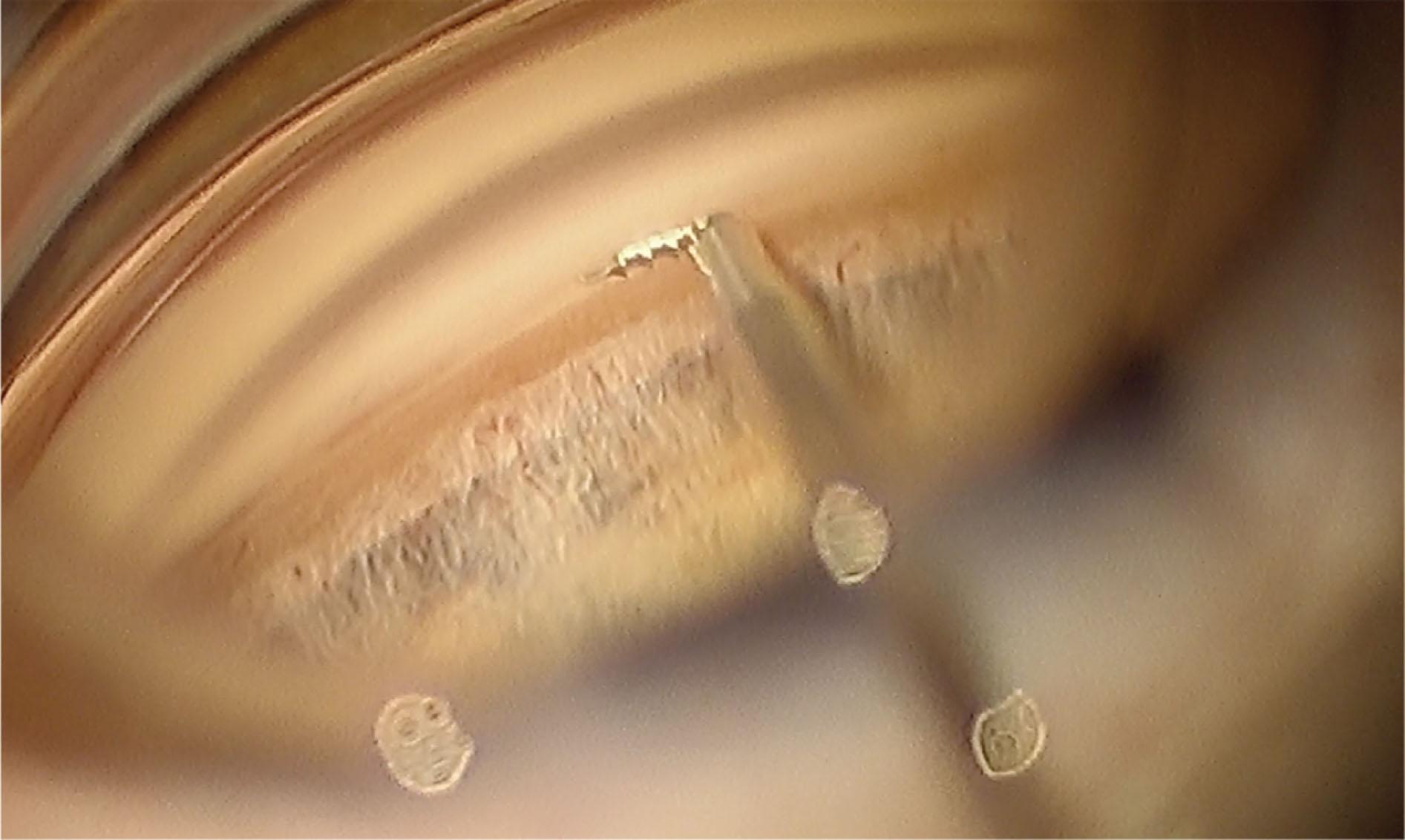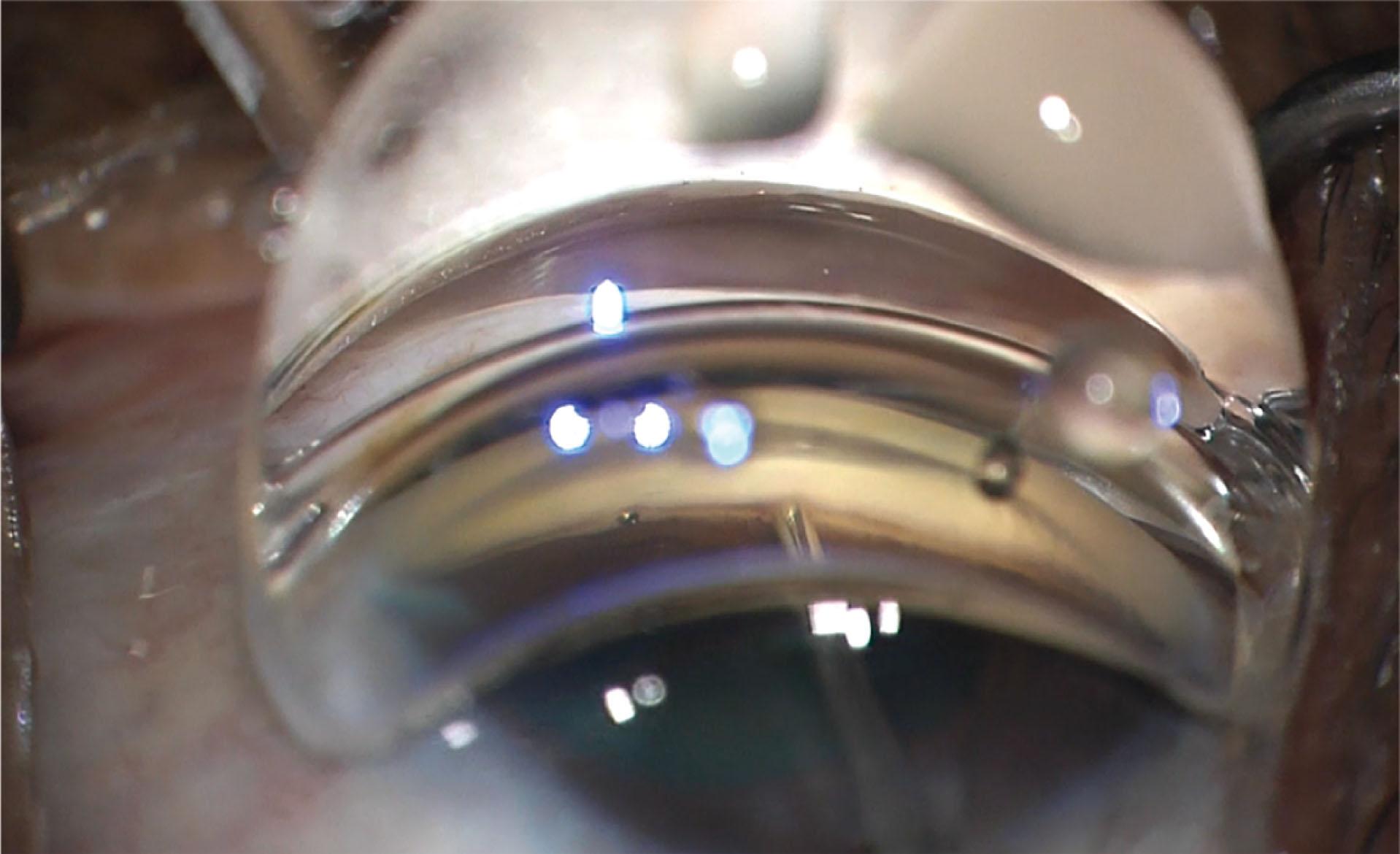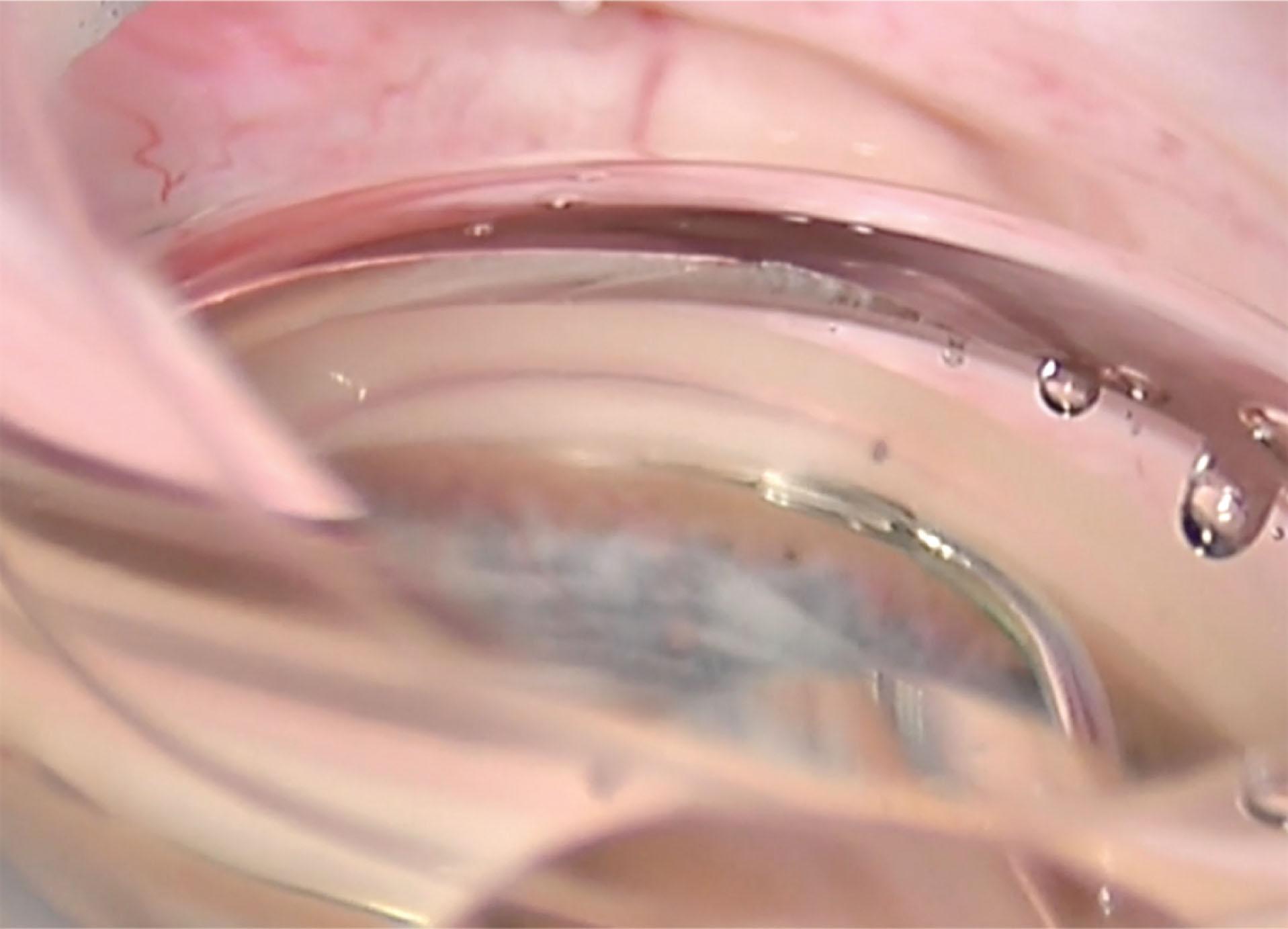Physical Address
304 North Cardinal St.
Dorchester Center, MA 02124
![]()
Minimally invasive glaucoma surgery and microincisional glaucoma surgery offer the theoretical advantages of lowering intraocular pressure with incisional surgery with fewer risks compared with conventional operations. Approaches include the use of microdevices for removal or bypass of abnormally high-resistance tissues.
Lower surgical and postoperative risk versus conventional glaucoma surgery.
Typically less IOP reduction versus conventional glaucoma surgery.
Minimally invasive and microincisional glaucoma surgeries:
Trabeculectomy ab interno (trabectome, Kahook dual blade).
Trabecular meshwork bypass stents.
iStent.
Hydrus.
Subconjunctival shunt.
Suprachoroidal shunts.
Canaloplasty.
Endocyclophotocoagulation.
Glaucoma is a chronic, progressive optic neuropathy and is the leading cause of global irreversible blindness. Disease prevalence is estimated to increase to more than 100 million people by the year 2040. Traditional glaucoma surgery focuses on reducing intraocular pressure (IOP) by bypassing the normal aqueous outflow pathway. Many new surgical options have emerged over recent years, and most look to enhance outflow through the conventional outflow system. The present and future burden of glaucoma continues to inspire innovation for novel treatment options.
Microinvasive glaucoma surgery (MIGS) has been defined by the presence of five criteria: a microincisional approach, minimal tissue trauma, modest efficacy, rapid recovery, and a high safety profile. MIGS can be categorized by these general approaches to lower IOP: decreasing trabecular meshwork (TM) resistance to aqueous flow, improving aqueous flow through Schlemm’s canal, decreasing aqueous production, creating a path for aqueous flow between the anterior chamber and suprachoroidal space, or diversion of aqueous to the subconjunctival space. This chapter will explore the currently available devices, technologies, and procedures:
TM bypass
iStent G1, iStent G2 (Glaukos Corporation, Laguna Hills, CA, USA)
Hydrus (Ivantis Inc., Irvine, CA, USA)
TM disruption
Ab interno trabeculectomy (AIT)/Trabectome (MicroSurgical Technology, Redmond, WA, USA)
Kahook dual-blade goniotomy (New World Medical, Rancho Cucamonga, CA, USA)
Gonioscopy-assisted transluminal trabeculotomy (GATT)
TRAB 360 (Sight Sciences, Menlo Park, CA, USA)
VISCO 360 (Sight Sciences)
OMNI (Sight Sciences)
Ab interno canaloplasty (ABiC; iScience Interventional, Menlo Park, CA, USA)
Endoscopic laser photocoagulation
Endocyclophotocoagulation (ECP; BVI Medical, Waltham, MA, USA)
Subconjunctival microshunts
Xen Gel Stent (AbbVie Inc., Chicago, IL, USA)
InnFocus/PreserFlo Microshunt (Santen, Emeryville, CA, USA)
Suprachoroidal shunts
SOLX Gold MicroShunt (GMS Plus; SOLX Ltd., Waltham, MA, USA)
CyPass Microstent (Transcend Medical, Menlo Park, CA, USA)
iStent G3 Supra (Glaukos Corporation)
MIGS increases outflow through preexisting pathways; therefore these surgeries typically lead to IOPs in the mid to late teens because they are limited by the episcleral venous pressure and distal outflow resistance. Generally, MIGS can be considered in any patient with mild to moderate glaucoma who requires a reduction in IOP to limit the progression of glaucoma or reduce medication burden. For patients with advanced glaucoma, most MIGS procedures do not offer sufficient IOP reduction. The favorable safety profile of MIGS procedures allow for surgeons to incorporate earlier surgical intervention in hopes of avoiding or delaying traditional incisional surgery, such as trabeculectomy or tube shunt surgery. Possible complications of MIGS include hyphema, postoperative IOP spikes, device obstruction, corneal decompensation, cyclodialysis, iridodialysis, or hypotony.
Angle-based MIGS requires a direct gonioscopic view of the anterior chamber angle during surgery, necessitating a clear cornea. Direct gonioscopy is a skill that must be mastered, because angle surgery requires controlled movements by one-handed instrumentation in a confined and delicate space. Most of these angle-based MIGSs can be done before or after phacoemulsification (phaco). The benefit of performing angle-based procedures before phaco is that the view of the angle structures is likely to be better. In contrast, when lens removal is done first, the angle deepens, and often blood refluxes into Schlemm’s canal and allows the surgeon to better identify the TM.
Trabecular bypass devices are designed to create a pathway between the anterior chamber and Schlemm’s canal. There are currently three US Food and Drug Administration (FDA)-approved microstents for insertion:
iStent G1 (Glaukos Corporation)
iStent Inject (Glaukos Corporation)
Hydrus Microstent (Ivantis Inc.)
Each of these microstents comes in a preloaded inserter and is designed to be injected via an ab interno approach into Schlemm’s canal. These stenting devices offer a wider pore for aqueous to enter Schlemm’s canal and collector channels, bypassing the resistance of the juxtacanalicular TM.
The first generation iStent is L-shaped, with a 1-mm-long body and an angled pointed tip designed to pierce the TM tangentially ( Fig. 10.26.1 ). There are retention rings on the outer aspect of the hollow body to keep the stent in place. It is composed of nonferromagnetic titanium with heparin coating and received FDA approval for placement in conjunction with cataract surgery in patients with mild-to-moderate open-angle glaucoma in June 2012.

This procedure can be done before or after phaco. The anterior chamber is filled with viscoelastic, particularly along the nasal angle. The patient’s head is tilted 30°–45° away from the surgeon and the operating microscope tilted to a similar degree toward the surgeon. Along with a coupling agent (most commonly a viscoelastic), a direct gonioscopy lens (Koeppe, Hoskins-Barkan, Swan-Jacob, or Richardson lens) is gently placed on the ocular surface to view an upright direct image of the angle.
The inserter is introduced through the main wound. The tip of the device should pierce the TM at a 30° angle. Then, pivoting within the temporal wound, the surgeon gently slides or sweeps the device into the canal. Reflux of blood from the snorkel end of the device is expected. If the blood causes loss of visualization, viscoelastic should be added locally to tamponade the bleeding and push the refluxed blood away from the area of interest. The inserter can be used to push the device and ensure it is in the correct position. During implantation, movement of the eye indicates that the iStent is hitting the back wall of Schlemm’s canal and a flatter approach should be taken.
Bahler et al. demonstrated that insertion of one stent nearly doubles outflow facility, and insertion of two stents more than quadruples it. Other strong evidence comes from a randomized, parallel trial by Samuelson et al. investigating 240 eyes randomized to phaco plus iStent or phaco alone. They found a 22% difference in the proportion of patients in the iStent group with an unmedicated IOP ≤21 mm Hg compared with the control group at 12 months (72% vs. 50%; p < 0.001). In addition, there was a significant difference in the proportion of patients who achieved at least a 20% IOP decrease without ocular hypotensive medication (66% phaco plus iStent vs. 48% phaco alone). There were no vision-threatening complications observed during the study period. Reported iStent-related complications included hyphema (0%–70%), stent malposition (2.6%–3%), and stent obstruction (4%–30%). At 2 years, the IOP decrease from baseline was 8% in the phaco plus iStent group versus 1% in the phaco group alone.
The second generation iStent is significantly smaller than G1 and has a different, bullet-shaped design: a “head” with four side-flow orifices located in Schlemm’s canal, a “thorax” in the TM, and a “flange” that remains in the anterior chamber ( Fig. 10.26.2 ). It is 0.4 mm long, 0.3 mm wide, and is made of titanium with a heparin coating. The iStent inject was approved by the FDA in 2018 for use in conjunction with cataract surgery. The handpiece comes preloaded with two microstents.

This procedure can also be done before or after phaco. The anterior chamber is filled with viscoelastic. The microscope is tilted as previously described. A direct gonioscopy lens is gently placed on the ocular surface to view an upright direct image of the angle. The preloaded handpiece is introduced into the eye, and the protective sleeve is retracted. The device delivery tip, or trocar, is used to pierce the TM to create a slight dimpling before the stent is deployed. Pushing too hard will result in a misfire, and the stent may not deploy or be “overinserted” too deep. Not applying enough pressure to create a dimple may lead to superficial deployment. Once the TM is punctured by the trocar, the surgeon must then ensure that the trocar is centered within the shaft of the injector. The most common error is to have a slight bend or bias in the trocar that can cause stents to misfire or damage the injector, preventing the deployment of additional stents. The two stents are generally placed several clock hours apart depending on the view and comfort level of the surgeon.
The US Investigational Device Exemption pivotal trial randomized patients with mild to moderate glaucoma to iStent plus phaco ( n = 387) or phaco alone ( n = 118). The investigators found the iStent inject group achieved a statistically significant reduction in unmedicated IOP, with 75.3% of the iStent inject plus phaco cohort achieving a 20% reduction in IOP compared with 61.9% in the phaco-only cohort at 24 months. The most common postoperative issues with the iStent inject were inability to visualize both stents, stent obstruction, and IOP spikes.
The Hydrus Microstent is made of flexible nitinol and is similar to the iStent in its mechanism of action: bypassing the TM. However, it is designed specifically to also dilate and scaffold Schlemm’s canal (dilates canal to four times the physiological cross section, per reports ). The device is 8 mm in length and spans 90° of the patient’s canal to increase outflow through the conventional pathway ( Fig. 10.26.3 ). This device was approved by the FDA in 2018 for implantation with cataract surgery.

This procedure is performed in a similar manner to the procedures previously described. The eye is filled with viscoelastic and the head/scope properly positioned to obtain a direct view of the angle. Similar to iStent, this device is preloaded in an injector. However, the technique with Hydrus is different compared with TM stenting. An incision should be made lateral to the traditional temporal incision for phaco, in what would be directly in line with the intended area of placement. The injector must carefully pierce the TM, then as the slider is advanced forward, pressure must be released (avoid indenting the TM) to safely deploy the device. When complete, blood can be seen refluxing from the tip of the stent. After successful implantation in the angle, the windows of the device should be visualized through the translucent TM for 90°, and the 1-mm inlet portion should remain in the anterior chamber.
The first peer-reviewed study was a randomized, parallel trial completed in 2015 that compared phaco with Hydrus versus standalone phaco in patients with primary open-angle glaucoma (POAG), pseudoexfoliation, or pigmentary glaucoma. Seventy-three percent of combined patients were off medications at the end of the study, while only 38% of patients in the phaco alone group were medication free. The HORIZON study (2019) randomized 369 eyes to phaco with Hydrus Microstent and 187 eyes to phaco alone and followed the patients for 24 months. Unmedicated IOP was reduced by ≥20% in 77.3% of Hydrus Microstent group compared with 57.8% of the phaco alone group (difference = 19.5%, 95% confidence interval [CI]: 11.2%–27.8%; p < 0.001). Further, the number of medications was reduced by 1.4 in the Hydrus Microstent group compared with 1.0 in the phaco alone group ( p < 0.001). The COMPARE trial (2020), which randomized eyes to receive standalone treatment in phakic patients with the Hydrus Microstent or two first-generation iStents, found that the Hydrus outperformed two iStents in reducing medication requirement at 12 months (46.6% of Hydrus patients were medication free compared with 24% of iStent patients).
The most common complication after Hydrus Microstent implantation is peripheral anterior synechiae (PAS) formation (18% of patients with focal 1- to 2-mm PAS in the Hydrus II study). Other potential postoperative complications include intraoperative or postoperative hyphema, macular edema, and transient IOP spikes. If iris adhesions to the implant develop and obstruct flow, argon laser can be used to attempt to relieve microstent obstruction.
These procedures are designed to disrupt the inner wall of Schlemm’s canal and TM. This increases outflow by opening the canal for aqueous to enter directly from the anterior chamber. FDA-approved procedures for this purpose include:
AIT (Trabectome)
Kahook dual-blade goniotomy
GATT
TRAB 360/VISCO 360/OMNI—ab interno canaloplasty
The trabectome (Neomedix Corporation, Tustin, CA, USA) is a surgical instrument used for plasma-mediated ionization and disintegration in a procedure known as AIT, one of the earliest MIGS procedures introduced into the surgical glaucoma armamentarium. The instrument consists of a bipolar 550-kHz electrode with adjustable power settings (typically 0.8–1.0 W) to abate the juxtacanalicular TM. The handpiece includes a 19.5-gauge infusion sleeve and a 25-gauge ablation tip powered by a footplate. The infusion helps to maintain the chamber and aids in aspiration of the ablated tissue debris. It was approved by the FDA in 2004 for the treatment of adult and pediatric glaucoma and may be used in phakic, pseudophakic, or aphakic eyes—as long as the gonioscopic view of the angle is clear. Contrary to the aforementioned procedures that bypass the TM, this technique removes juxtacanalicular TM, allowing aqueous direct access to the outflow system downstream of the ablation arc. This device is commonly used for patients with POAG and may be particularly useful for cases of secondary open-angle glaucoma (i.e., pseudoexfoliative, pigmentary, corticosteroid-induced, and uveitic), in which the outflow obstruction is primarily at the level of the TM.
This procedure can be done before or after phaco. First, a clear corneal incision at least 1.6–1.8 mm in size is made. Some suggest lateral enlargement of this wound to improve range and eliminate possible striae. The microscope is then tilted 30°–45° toward the surgeon and the patient’s head away from the surgeon. To deepen the chamber, the irrigation bottle should be raised to maximum height with continuous irrigation, because viscoelastic is not used during ablation to avoid optical interfaces and trapping of ablation bubbles. Under direct gonioscopic view, the handpiece is used to engage and ablate the nasal TM. It is important to confirm that the pigmented TM has been properly ablated by visualizing the white of the outer wall of Schlemm’s canal (SC). Blackening, in contrast, indicates coagulative heat damage that may result in poor wound healing. An “outward push” during ablation should be avoided to prevent damage to distal collector channels. The handpiece can be rotated to ablate up to 180° of the TM using both forehand and backhand techniques. Postoperatively, surgeons may prescribe pilocarpine 1%–2% for up to 8 weeks to help prevent PAS formation.
Become a Clinical Tree membership for Full access and enjoy Unlimited articles
If you are a member. Log in here